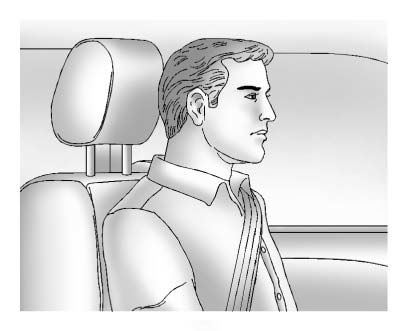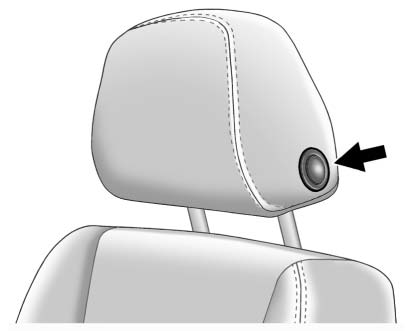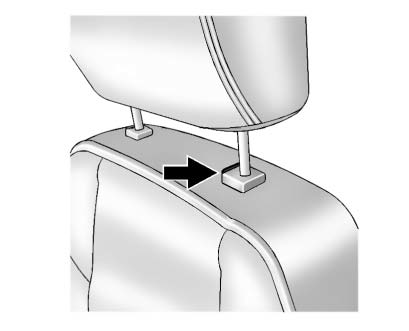Head Restraints
The vehicle's front seats have adjustable head restraints in the outboard seating positions.
The vehicle's rear seats have adjustable head restraints in the outboard seating positions.
![]() WARNING
WARNING
With head restraints that are not installed and adjusted properly, there is a greater chance that occupants will suffer a neck/ spinal injury in a crash. Do not drive until the head restraints for all occupants are installed and adjusted properly.

Adjust the head restraint so that the top of the restraint is at the same height as the top of the occupant's head. This position reduces the chance of a neck injury in a crash.
Front Seat

To raise or lower the head restraint, press the release button located on the side of the head restraint and pull up or push the head restraint down and release the button.
Pull and push on the head restraint after the button is released to make sure that it is locked in place.
The front head restraints are not designed to be removed.
Rear Seat

Pull the head restraint up to raise it.
To lower the head restraint, press the release button, located on the head restraint post on the top of the seatback, while you push the head restraint down.
Push down on the head restraint after the button is released to make sure that it is locked in place.
If you are installing a child restraint in the rear seat, see “Securing a Child Restraint Designed for the LATCH System” under Lower Anchors and Tethers for Children (LATCH System) .
See also:
Roadside Assistance Program
U.S.: 1-800-252-1112 TTY Users: 1-888-889-2438 Canada: 1-800-268-6800
As the owner of a new Buick, you are automatically enrolled in the Roadside Assistance
program.
See Roadside Assistance Progra ...
Fuels in Foreign Countries
If you plan on driving in another country outside the
United States or Canada, the proper fuel might be hard
to find. Never use leaded gasoline or any other fuel
not recommended in the previous ...
Owner Checks and Services
These owner checks and services should be
performed at the intervals specified to help ensure
the safety, dependability, and emission control
performance of your vehicle. Your GM
Goodwrench® deal ...


